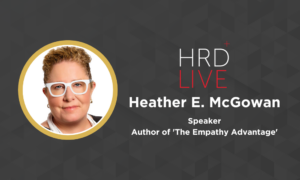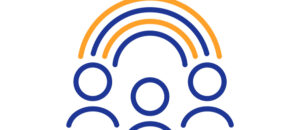Is your D&I strategy fit for today's challenging conditions?
- 5 Min Read
An effective D&I strategy is no longer ‘nice to have,’ but a vital component to a company’s operations. INvolve’s Suki Sandhu discusses why this is the case and how HR leaders can succeed.
- Author: Suki Sandhu
- Date published: Jul 27, 2020
- Categories

Over the last decade the world has changed drastically. The conversation on D&I strategy is no exception. In fact, as the huge growth in Pride celebrations and other popular social movements have shown, diversity and inclusion (D&I) is one of the most urgent and pressing issues facing society and business today – taking its place alongside the environment and technology as key issues which will provide business with substantial challenges, but also huge opportunities.
Against this fast-moving backdrop, many companies are still caught thinking about D&I strategy as a ‘nice to have’ moral obligation, rather than a key business priority. This is in spite of the substantial research published over the last few years which shows that more diverse companies consistently outperform the market average.
In our own research, we showed that workplaces with the strongest diversity policies were 54% more likely to outperform the industry mean compared to those with the weakest. Not only this, but companies also face the growing risk of being called out publicly for having less than diverse leadership teams and no clear voice on some of the biggest issues facing us as a society. A situation that can easily lose customers, clients, and talent; especially among the values-driven generations now entering the workforce.
All this means that it really pays to ask the question – is your current D&I strategy fit for purpose? And to answer that question, it pays to ask four more key questions.
Is it data-driven?
As the saying goes, ‘what gets measured, gets done.’ When it comes to D&I strategy, many organizations have not got the underlying data to understand the make-up of their businesses when it comes to ethnicity, LGBT+ and other characteristics, where the key issues and challenges exist, and what progress they are making towards solving them.
How can an organization assess if they are making progress on inclusion for black people when they have no idea of how many employees are black, what level they are in the company, what their retention rates are, and how many didn’t get hired or promoted in comparison to their white colleagues?
It is having access to this type of information that can transform unconnected actions into a holistic and effective strategy that can be reported into leadership and reviewed regularly against targets.
Although setting up appropriate ways to collect such data can be difficult at first, with increasing pressure for companies of all sizes to publicly report on diversity it needs doing, and the sooner you start, the better position your organization will be in when it inevitably becomes mandatory.
Is it top-down and bottom-up?
One of the key reasons why D&I strategies fail to drive true cultural change is that they take either a top-down, or bottom-up approach. To be effective, both are needed. Firstly, it is essential that any strategy understands and engages with the real-life experiences of minority groups within the business from the lowest levels upwards.
Secondly, it is vital that leadership don’t just appreciate the business case for increasing diversity, but are vocal supporters of initiatives in support of increasing inclusion. They need to make it clear that D&I is an absolute business priority.
Lastly, any strategy needs to understand the power of advocates, and how training and learning can change the mindset of the majority to be supporters of strategies that help the progression of minorities.
Is it intersectional?
Intersectionality acknowledges that some people tick multiple boxes when it comes to diversity, and those with more than one diverse characteristic can face unique obstacles and increased inequality. An Asian LGBT+ woman, for example, can face discrimination because she is Asian, LGBT+, and a woman – potentially giving her a more difficult path to progression compared to other women or other LGBT+ coworkers.
Your focus for D&I strategy needs to reflect reality. Many D&I strategies still consider diversity in separate strands and target actions accordingly; meaning they are inadequate for people who identify across multiple diverse characteristics.
It is also important to remember that minority groups also have quieter minorities within them. Your organization’s internal LGBT+ group may look vocal and strong but if those on the committee calling the shots are all white gay men you are failing to engage with the many other voices within that community. The same can be true for BAME, where personal experiences and inequalities can vary hugely between different ethnic minorities contained with that very broad definition.
Does it work in a post-COVID world?
The COVID-19 pandemic has been a huge test for many business strategies and D&I hasn’t been an exception. Minority groups have been disproportionately affected by Coronavirus so it is important to know whether your company was there to provide support to diverse communities when it was needed most, or whether your D&I initiatives and networks simply disappeared as soon as the office became inaccessible?
As the world emerges from this crisis, companies need to think carefully about the important role that diversity can play in their recovery. It is undeniable that having a number of different viewpoints and experiences at the leadership level can help a company deal with the unexpected, and increasing leadership diversity can provide this. For some companies early on in their inclusion journey it may feel counterintuitive to increase spend and focus on D&I when the financial pressure is on. However, those progressive companies that do are the most likely to come out of this crisis the strongest and be best prepared to deal with whatever the future has to throw at them.









